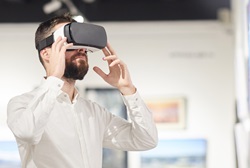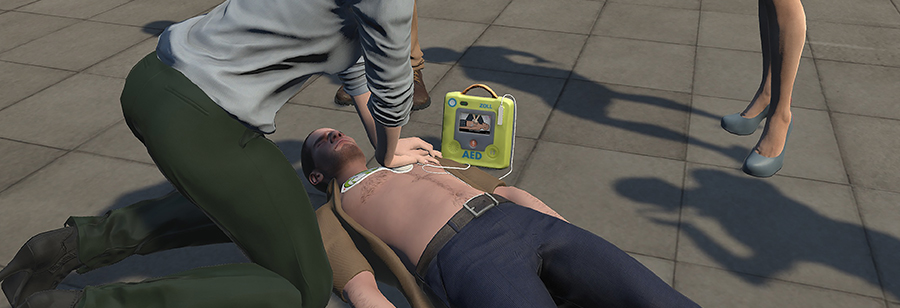Virtual Reality and CPR/AED Training
Virtual reality is topping headlines almost daily and has managed to go from a tacky ’90s trend to a booming industry that’s now set to be worth $62.1 billion by 2027.1 But what exactly is virtual reality, and how is it changing the world of education, and more specifically CPR/AED training?
Merriam-Webster.com defines virtual reality as:
“an artificial environment which is experienced through sensory stimuli (such as sights and sounds) provided by a computer and in which one's actions partially determine what happens in the environment”

This future, however, was not as close as it seemed at the time and by the mid ’90s, the virtual reality industry had already started to fade away. At that time the technology just wasn’t powerful enough to escape the novelty phase. Throughout the early 2000s VR quickly aged into a tacky relic of ’90s techno-optimism.
Opinions would change in the early 2010s with the creation of Oculus rift, a much more powerful and multifunctional VR headset. In 2014 Facebook purchased the company and the second wave of virtual reality was born. Today, dozens of companies are creating VR headsets that range in complexity from thousand-dollar headsets utilizing powerful computers to cardboard headsets that require only a smartphone.
Now virtual reality has been adopted by many industries, and not only as a gaming experience, but as a learning and training tool.
Virtual Reality and CPR/AED Training
In 2020, the American Heart Associated recognized the benefits of using new and emerging technologies, including virtual reality, in providing realistic training experiences. With this recommendation the AHA identifies the importance of novel technologies in delivering a more immersive training experience.3
“Some studies have demonstrated positive benefits on learning outcomes (eg, improved knowledge acquisition, knowledge retention, and CPR skills) with these modalities.”
Sudden cardiac arrest (SCA) scenarios are very stressful and always unexpected. When someone collapses suddenly, their survival could depend on bystander intervention. VR can help people gain confidence, as it can provide a glimpse of what an SCA scenario looks, feels, and sounds like.
The increased popularity and accessibility of virtual reality is what led ZOLL® to develop an SCA virtual reality app several years ago.
ZOLL Virtual Rescue
ZOLL’s Virtual Rescue AED VRhero app was created to simulate a sudden cardiac arrest save scenario. Users can choose from several settings and experience, in a simulated world, an SCA emergency. The app allows users to see how ZOLL AEDs guide rescuers in delivering high-quality CPR within the AHA-recommended compression depth (2–2.4 inches) and rate (100–120 bpm). The AEDs provide real-time feedback on CPR quality, so users know when they are in target range for optimal CPR.
Request your free VR mini goggles and experience the ZOLL Virtual Rescue AED VRhero app for yourself.
1"2021 wird das Jahr der Virtual Reality". www.inside-it.ch. Retrieved 9 January 2021.
2VIRTUAL REALITY - History (archive.org)source
3CPR & ECC Guidelines | American Heart Association CPR & First Aid

